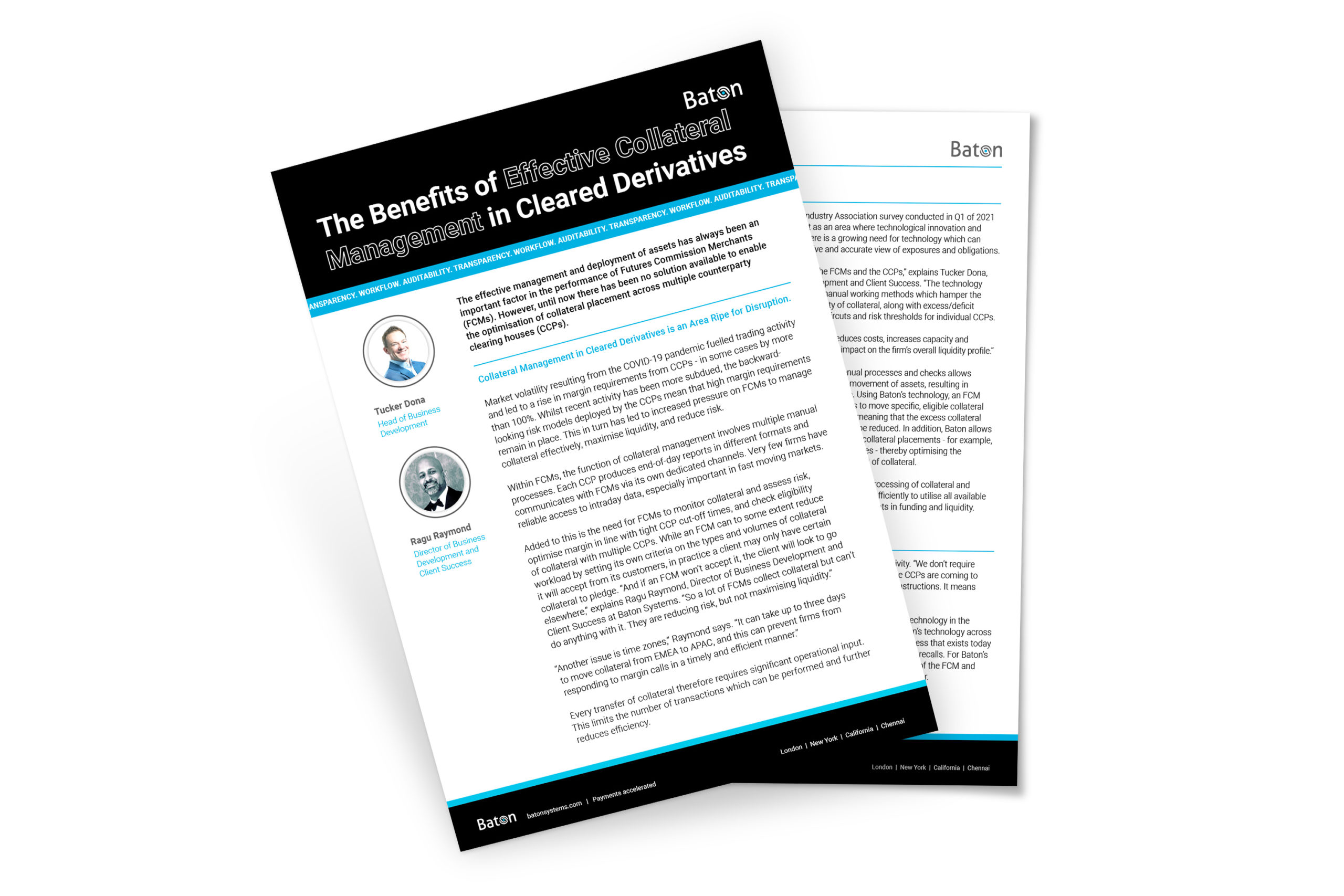Industry Article
The Benefits of Effective Collateral Management in Cleared Derivatives
The effective management and deployment of assets has always been an important factor in the performance of Futures Commission Merchants (FCMs).
However, until now it’s not been possible to achieve consolidated connectivity to multiple central clearing counterparties (CCPs) to enable FCMs to access real-time collateral and margin data – invaluable insight that can be used to optimise and instruct collateral movements across CCPs globally.
Market volatility resulting from the COVID-19 pandemic fuelled trading activity and led to a rise in margin requirements from CCPs – in some cases by more than 100%. Whilst recent activity has been more subdued, the backwardlooking risk models deployed by CCPs mean that high margin requirements remain in place. This in turn, has led to increased pressure on FCMs to manage collateral effectively, maximise liquidity, and reduce risk.
“It can take up to three days to move collateral from EMEA to APAC, and this can prevent firms from responding to margin calls in a timely and efficient manner.”
– Ragu Raymond
Within FCMs, the function of collateral management involves multiple manual processes. Each CCP produces end-of-day reports in different formats and communicates with FCMs via its own dedicated channels. Very few firms have reliable access to the intraday data that can prove critically important in fast moving markets.
Added to this is the need for FCMs to monitor collateral and assess risk, optimise margin in line with tight CCP cut-off times, and check eligibility of collateral with multiple CCPs. While an FCM can to some extent reduce workload by setting its own criteria on the types and volumes of collateral it will accept from its customers, in practice a client may only have certain collateral to pledge.
———————————- Download the full Article to read more ———————————-

